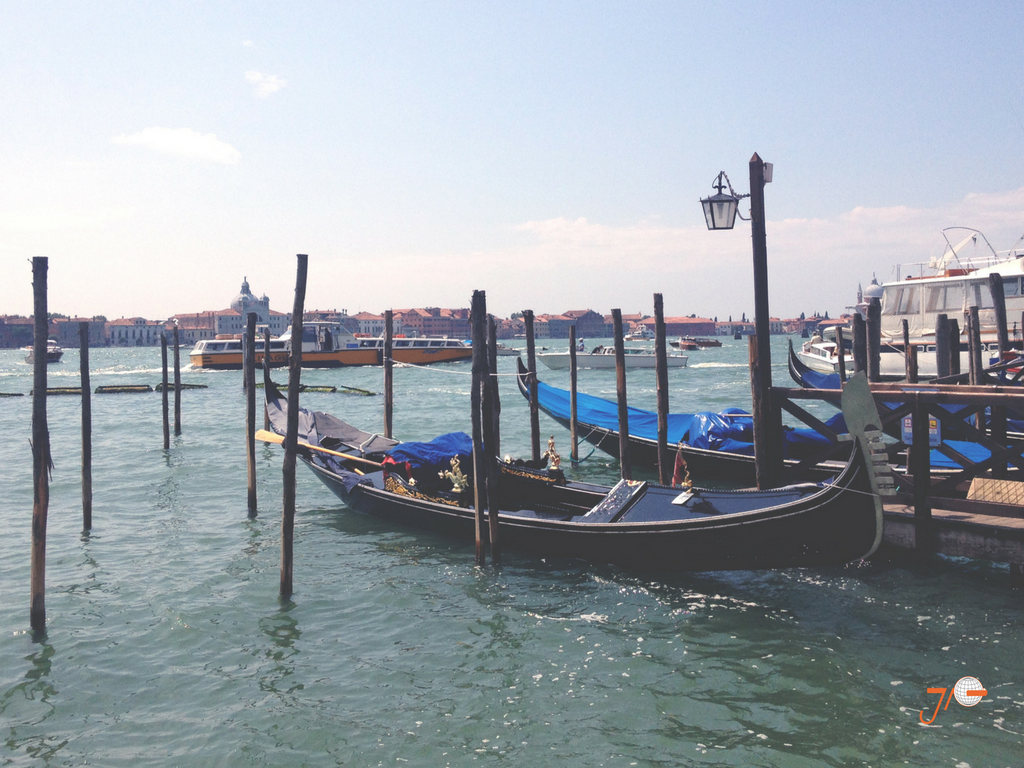Tackling an International Mafia
It can be argued that the Italian mafia may be the most infamous in the world. However, that only means that the government is equally as persistent to keep them from expanding.
Tackling An International Mafia
It can be argued that the Italian mafia may be the most infamous in the world. However, this only means that the government is equally as persistent to keep them from expanding.
As mentioned in our article “From Crypto to Cannoli," the Italian government is no stranger to organized crime. Earlier in January, Italy ordered the arrest of 33 people on suspicion of running a Chinese mafia group involved in gambling, prostitution and drugs - which dominated the transport of Chinese goods across Europe.
The group’s base was in Prato, near Florence which is a central hub for the textile industry where various factories are Chinese owned. The network also had members in other parts of Italy and across Europe. The suspected mob boss, Naizhong Zhang, was based in Rome and used profits from illegal activities to build a massive transport company that dominated the trucking of goods for thousands of Chinese companies, police stated. He ran a near-monopoly in distribution across much of Europe through extortion against Chinese companies. According to Italian Interior Minister, Marco Minniti, the operation broke up “a dangerous organization that had used force and was financed by its illegal activities.” Federico Cafiero De Raho, Italy’s chief anti-mafia prosecutor stated that “It’s quite unusual to be able to identify a complex Chinese mafia organization” and that "Being able to shed light on mafia character of this group is almost incredible.”
It is estimated that Zhang’s business activities were worth “hundreds of millions of euros.”
While issues of breaking up crime groups can be stopped, the fight is far from over in Italy.
We hope you enjoyed learning how the Italian government is currently Tackling An International Mafia! How do you think Italy could continue battling the ever-present threat of the mafia? Leave a comment below!
Italian American Baseball Family
Roberto Angotti’s recently released documentary "Italian American Baseball Family" documents the journey of how Italian Americans assimilated into popular culture through America's favorite pastime and as well as their children who became infatuated with baseball - a sport as foreign as the country they were now a part of.
Italian American Baseball Family
Roberto Angotti’s recently released documentary "Italian American Baseball Family" documents the journey of how Italian Americans "assimilated into popular culture through America's favorite pastime.” Angotti provides a look into the lives of Italians who arrived in America between 1880 and 1920 and their children who became infatuated with baseball - a sport as foreign as the country they had moved to.
While covering the 2013 Classic, Angotti met many Italian American fans and former players including the famed Mike Piazza and Mike Scioscia and seeing the underdog Italian team take home the win inspired him to further delve into the history of Italian Americans in baseball.
The resulting film, Italian American Baseball Family, which features interviews with famous baseball heroes, including former LA Dodgers manager Tommy Lasorda, won the Russo Brothers Italian American Film Forum Award at the National Italian American Foundation’s 42nd Anniversary Gala in Washington, D.C.
Lasorda’s commitment to the Dodgers which lead them to win World Series championships in 1981 and 1988 was moving not just as a Dodger fan, but as an Italian American. Angotti stated that he plans to make a series of Italian American baseball films and that he sees this first documentary as a way to educate young Italian Americans and others on the plight of Italian immigrants through the lens of the world of baseball.
“Not having an appreciation of your heritage is like an olive tree with no roots...Baseball is a part of mine.”
Listen below as Angotti provides a phone interview discussing his movie:
We hope you've enjoyed learning about Roberto Angotti’s Italian American Baseball Family! Do you have a favorite Italian American baseball icon? Leave a comment below to let us know who!
From Crypto To Cannoli
"Since 2014, citizens here are experimenting what Bitcoin is and they started to use it to pay goods and services in physical places. So they took away their money from the traditional financial system to put them into this new form of digital gold."
From Crypto To Cannoli
The prevalence of the mother of all cryptocurrencies, Bitcoin, has grown exponentially over recent years in Italy. It even seems that the mafia has started to use it for their less than legal activities according to Italian Senator Lucrezia Ricchiuti. If you’ve found yourself in the position to hold any amount of the currency with the recent surge, here is how you can plan to not only go from crypto to cannoli as you make your way around Italy, but where to connect with other crypto-enthusiasts.
At the moment Italy has only about 10 BTMs (Bitcoin ATMs), a very small number considering how many Bitcoin machines are available in the United States. The Italian app called Qui Bitcoin indicates BTMs in Trento, Genova and Reggio Emilia.
There are many terms tossed around the crypto world that can cause confusion in the non-trading community including, blockchain, cryptocurrency, bitcoin, altcoin, etc. Essentially, blockchain is the technology that enables the existence of various cryptocurrencies, and Bitcoin is the name of the best-known cryptocurrency and specifically the one for which blockchain technology was initially invented.
A Rome based company, Blockchain Education Network Italia, spreads the word of Blockchain technology through meetups, conferences and the development of new projects pertaining to the technology. At the moment, BEN is only open to those enrolled in a university.
Of course, there are a wide range of online shops that accept Bitcoin payments but only a few of them are based in Italy. Inbitcoin is the first Italian company to allow merchants to accept Bitcoin as a form of payment in their stores. It operates in Trento, Rovereto, Pordenone and Milan. Inbitcoin founder, Marco Amadori stated
“Since 2014, citizens here are experimenting [with] what Bitcoin is and they started to use it to pay for goods and services in physical places. So they took away their money from the traditional financial system to put them into this new form of digital gold.”
We hope you've enjoyed learning about the ever growing influence of cryptos in Italy with From Crypto To Cannoli! What do you think about the future of cryptocurrency in Italy? Leave a comment below!
Moving Forward With Machiavelli
Keep your momentum with sound advice from Italian diplomat, politician, historian, philosopher, humanist, and writer, Niccolò Machiavelli.
Moving Forward With Machiavelli
Moving forward this
year?
Keep your momentum with sound advice from Italian diplomat, politician, historian, philosopher, humanist, and writer, Niccolò Machiavelli.
Machiavelli, born in 1469, was an Italian diplomat, politician, historian, philosopher and humanist, of the period and has often been called the father of modern political science. He was for many years a senior official in the Florentine Republic overseeing both diplomatic and military affairs. He also wrote comedies, carnival songs, and poetry.
The term "Machiavellian" is often associated with deceit. However, commentators, such as Baruch Spinoza and Jean-Jacques Rousseau have stated that he was actually a republican. Even when writing The Prince, his writings were an inspiration to Enlightenment proponents of modern democratic political philosophy.
Regardless of your stance on Machiavelli as a person or political figure, his poignant recorded quotes, such as those listed below, reveal how this philosopher's drive was undeniably inspiring.
"The more sand has escaped from the hourglass of our life, the clearer we should see through it.”
"It is not titles that honor men, but men that honor titles.”
"The wise man does at once what the fool does finally.”
"Never was anything great achieved without danger.”
"Where the willingness is great, the difficulties cannot be great."
"Whosoever desires constant success must change his conduct with the times.”
We hope you're feeling motivated Moving Forward With Machiavelli!
If learning a new language is on your list of resolutions this year, our team of enthusiastic native instructors want to help you achieve your language goals and advance your fluency!
Istituto Marangoni Takes Miami
Italy’s renowned fashion institution, Istituto Marangoni has opened its 10th location, its first in the United States, this past January.
Istituto Marangoni Takes Miami
Italy’s renowned fashion institution, Istituto Marangoni, has opened its 10th location (its first in the United States) this past January.
Photo: www.istitutomarangoni.com
Founded in Milan in 1935, the fashion, art and design school has trained some of the most famous fashion icons including: Domenico Dolce, Franco Moschino and Paula Cademartori.
The prestigious institute currently enrolls 4,000 students per year from 107 countries at its Paris, London, Shanghai, and Mumbai locations. However, the most exciting news for U.S. based students is that the institute will be offering $1 million worth of scholarships to new students at the Miami campus.
Why take Miami? Istituto Marangoni searched for a destination that not only was a cultural hub for the arts, but also was easily accessible from other fashion-centric countries, especially those in Latin America.
The company has stated:
“Bringing Istituto Marangoni to the Americas satisfies a long-term vision to support and develop youth interested in fashion and design from all over the world,” said group managing director Roberto Riccio. “We are thrilled by the opportunity to give emerging talent in the Americas a platform to hone their skills and realize their true potential in the industry.”
As Istituto Marangoni takes Miami, it is apparent that "The Future is Foreign" and that includes Italian language & culture.
At JP Linguistics, we can put you on the road to Italian fluency sooner than you may have ever thought possible. Our immersive Group Classes and Private Lessons ensure that you are not only able to speak with ease, but also be exposed to the culture from which the language stems.
Cioccolata Calda
Not for the faint of heart, Cioccolata Calda is rich, thick, and full of real chocolate...
Cioccolata Calda
While it may not have the same recognition as Chocolate Cliente Mexicano, cioccolata calda is the decadent Italian chocolate treat you never knew you needed during the holiday season, until now. Unlike gelato, which is available year-round, cioccolata calda is only readily available in most Italian restaurants when the weather turns cool. If you aren't currently finding yourself at Catinari, where you can find arguablly the most decadent cioccolata calda, you can follow this recipe to get your chocoalte fix for the winter!
Not for the faint of heart, Cioccolata Calda is rich, thick, and full of real chocolate.
Cook Time: 15 mins Yield: Serves 2 to 4
Ingredients:
2 tablespoons butter
2 teaspoons to 1 tablespoon cornstarch
2 cups milk
4 tablespoons sugar
1 cup chopped chocolate or chocolate chips
Instructions:
Melt butter in a medium saucepan over low heat.
Whisk in cornstarch until combined and melty. If you want the hot chocolate thicker, use the maximum amount of cornstarch.
Add in milk and sugar. Increase the heat gradually to medium-high. Bring to a boil, stirring constantly. Mixture will start to thicken.
Once the mixture begins to thicken, turn the heat down to low and add in the chocolate chips. Stir constantly until well melted.
Serve hot. Keep the leftovers because it is also amazing, if not better cold!
We hope you enjoyed learning how to craft your own Cioccolata Calda! To learn about all of the decadent offerings the Italian culture encapsulates, be sure to check out our full immersive Group and Private Classes!
Secret Marriages And Lavish Celebrations
Saint Valentine’s Day, referred to as la festa degli innamorati in Italy, has blossomed from it's originally Christian and pagan-Roman traditions.
Secret Marriages And Lavish Celebrations
Saint Valentine’s Day, referred to as La Festa Degli Innamorati in Italy, has blossomed from its originally Christian and Pagan-Roman traditions. The Catholic Church specifically recognizes at least 3 different saints named Valentine, with one legend claiming that Saint Valentine (San Valentino) was a priest who served during the third century in Rome that performed marriages in secret for young lovers. When Emperor Claudius II decided that single men made better soldiers than married men and outlawed marriage for young men, San Valentino continued marrying the young couples in secret. Eventually, Claudius discovered his actions and ordered Valentine to be put to death.
The first testimony, in the form of a poem, that links Saint Valentine to romance and lovers dates back to 1415, written by Charles, Duke of Orleans is part of the manuscript collection of the British Library.
In Italy, there is more than the lovers’ celebration because Valentine is the patron saint of many villages where many communities celebrate with festivals and processions. In Terni and Bussolengo, large celebrations are held on the 14th of February.
In Sadali, Valentine is the patron saint of all newlyweds; however, the celebration is in October and last 2 - 3 days.
In Quero they celebrate by blessing a large number of oranges that are then tossed down a slope by the church of Saint Valentine.
Photo: web.prm.ox.ac.uk/
In Padua, celebrations of family and children and the love between them are held by distributing blessed keys.
Photo: ingargano.com
In Vico del Gargano, the entirety of the town is decorated with thousands of oranges. The statue of the San Valentino is also decorated with oranges and a procession with the statue and relics of the saint. It is said that drinking the juice of the blessed oranges brings joy and happiness.
Imagining a romantic la festa degli innamorati? While we can't transport you to Italy, the land of Secret Marriages And Lavish Celebrations, we'd love to celebrate with you in NYC with a FREE event! Click below to gain access.
Remembering A Spaghetti Westerner
While his name may not be at the forefront of the cinematic world, there is no denying that Bacalov has and will continue to impact the modern movie-goer through his timeless compositions...
Remembering A Spaghetti Westerner
Luis Bacalov, whose work is remembered from Italian crime movies, to spaghetti westerns, and more contemporarily, Quentin Tarantino films, died Nov. 15 at a hospital in Rome at the age of 84.
Bacalov was born near Buenos Aires but spent almost his entire life working in Italy, where he fused his take on the tango into many of his scores including “Il Postino” which would earn him not only an Oscar for best original dramatic score, but a permanent place in the hearts of spaghetti westerners around the world.
Though he was often overshadowed by famed composer and good friend, Ennio Morricone, who famously composed theme of the spaghetti western classic,“The Good, The Bad, and The Ugly” Mr. Bacalov composed some of the most memorable tracks of Italy’s 60s and 70s western boom.
Possibly the best example of his timelessness in composition is the title song for “Django” (1966), a Franco Nero movie that was so violent that it was banned in England for nearly 30 years. Quentin Tarantino took such a liking to the song that he came to be used it in the title sequence for his smash revisionist history hit, “Django Unchained,” thus joining the pair of Bacalov’s compositions used in the “Kill Bill” series.
While his name may not be at the forefront of the cinematic world, there is no denying that Bacalov has and will continue to impact the modern movie-goer through his timeless compositions.
We hope you enjoyed learning about one of the most influential spaghetti westerners, Luis Bacalov, and how his compositions changed the Italian cinema and culture. For more Italian culture, be sure to check out our highly rated, fully immersive group and private classes!
The Hidden Gems of Italy
There is a way to get in on an exclusive Italian experience once every year, so before you spend all of your hard earned money on that ticket to Italy, read on...
The Hidden Gems of Italy
If you had to make a list of places you visit every time you make a destination trip, would you happen to include a museum? If the answer is yes, you’re not alone, especially in Italy. Italian state museum revenues increased by almost 50 million euros between 2013-2016 and has seen an increased visitor rate of almost 19%. With the vast exhibitions, this shouldn’t come as much of a surprise, however it does mean that museums can be increasingly difficult to peruse without feeling like you’re standing cheek to cheek with strangers on the NYC transit system (which is your favorite pastime, right?).
There is, however, a way to get in on a more exclusive experience once every year, so before you spend all of your hard earned money on that ticket to Italy, read on.
The Fondo Ambiente Italiano (FAI) or National Trust of Italy hosts an annual “Spring Days” event in March that opens up many hidden gems of Italy including: buildings, villages, and gardens to visitors that are usually closed to the public.
This event includes 1,000 sites in 400 towns.
Among these, the art schedule includes 260 buildings and villas, 51 villages, 79 castles and towers, 90 small museums, 40 parks and natural areas, 20 archaeological areas, 7 military establishments and 20 academies, schools, and institutions, 16 industrial and business museums, 14 theaters and amphitheaters, 8 cemeteries, and 2 former psychiatric hospitals.
Arguably one of the most impressive hidden gems of Italy is the Brisighella Convent, which is so large that the nuns use scooters to get around. This alone is reason enough to start booking that trip.
To see the full list of the true hidden gems of Italy, feel free to check out the official FAI website here. This website is in Italian, however, so it would be recommended to have a translator handy! If you would like to be able to make your trip sans translator, there's no better accompaniment to experiencing these hidden gems than with your knowledge of Italian! Grazie!
3 Italian Menswear Brands You Should Know
Boost up the sophistication of your wardrobe with these three Italian fashion brands - for casual & formal attire.
3 Italian Menswear Brands You Should Know
Italian fashion has been at the forefront of emerging talent and trends since the beginning. The luxury house staples still firmly hold their place, while other brands ranging from athletic-inspired to tailored-cut all play an important part in a man's wardrobe. Some brands focus on the staples, while others play up the trends to stay ahead. Here are 3 Italian Menswear Brands You Should Know right now to help boost up the sophistication of your wardrobe. We hope you enjoy!
MISSONI
This brand embodies the spirit of the sixties having been founded by Ottavio and Rosita (business & life partners) who started Missoni in 1953. Based in Varese, 55 kilometers north of Milan, the classic zig zag knitwear is globally recognized and is now a forever trend staple. The family-run company keeps up its success by adding more channels, i.e. Missoni Home, as well as adapting to what the customer wants. The big focus for their menswear is the statement shirt; whether that be classic T style or a patchwork button down. A favorite touch to any outfit is the secret of the socks, and you can be assured they don't slack on accessories either.
Learn more and see new arrivals on their website www.missoni.com.
(All images credits: www.missoni.com)
Diesel
Yes, you did read this correctly, Diesel is not that laid back California brand you though you knew. Headquartered in Breganze, Italy, Diesel's Founder, Ross Rozzo, originally started working for a manufacturer called Moltex. After two short years at the company, Rozzo bought 40% of their stock which eventually changed its brand name to Diesel. In 1985, Rozz purchased the remaining portions of stock to become the sole owner of the brand. His vision for this worldwide fashion house has been to embody the laid back California lifestyle through their creative department since 1978. Denim and casual-wear are their strong-suits, fit for the modern man. While jeans come to mind first, this brand excels in wardrobe pieces fit for all occasions; casual, night out and even work wear.
Learn more and see new arrivals on their website www.diesel.com.
(All images credits: www.diesel.com)
Lubiam
This company cares fondly about tradition which can be seen in the craftsmanship and design of all their garments. Founder, Luigi Bianchi Mantova, set up Primaria Sartoria Luigi Bianchi in 1911 with the aim of designing premium menswear suits and women's dresses. He was the first to start a global brand that would eventually pass through four generations. In 1920, the company abandoned womenswear to focus solely on tailoring mens goods. This passion lead to a scale of over 400 employees in 1936. The name LUBIAM was created as an acronym of the founders full name Luigi Bianchi Mantova. Their keen eye for details and tradition doesn't just lie in the cut of their fabric, it runs through their family-friendly ethics. They gladly provide flexible work hours and part-time options for their employees and have even opened up nursery for workers with families.
“We truly believe in family values,” states Edgardo Bianchi, Managing Director of LUBIAM, “this is why we want togive our employees substantial support in their everyday lives. We believe in solidarity and we hope to be an example to other firms similar to ours.”
Learn more and see new arrivals on their website www.lubiam.it.
(All images credits: www.lubiam.it)
Did you like what you read? Let us know! Comment below with your favorite Italian brand and share the post on social media. These 3 Italian Menswear Brands You Should Know are at the top of our shopping lists and, looking the part, is one step closer to embodying the Italian lifestyle. Why not add more and embody the language as well? Check out our Group Italian Classes and Private Italian Lessons and sign up today. Grazie!
How to Become a Gondolier
You have to prove your seriousness, knowledge of boating, willingness to clean the boat, but also your willingness to help tourists to settle and feel confortable.
How to Become a Gondolier
It is not possible to think about Italy, without thinking about its famous Venetian Gondolas. Gondolas are ancient, so ancient that the trace of its official inventor is hard to find. Indeed, this flat-bottom boat is around a thousand years old! There is a first mention of a Gondola in a correspondence from Doge Vitale Falier who was a Duke in Venice in 1094 where he used the word gondulam. Weather it is old or pretty recent, everyone loves a nice gondola ride on the venetian river where you can fill your eyes with wonders and your ears with beautiful and melodic Italian songs. Today, we are taking you to Venice for your first (or second) gondola ride... Enjoy!
What is a gondola?
A gondola is a boat that has a flat bottom and it is about 10,85 metres (34ft.) about 1,40 metres (4.5 ft.) in width. The boat is made with several kinds of wood such as fir, cherry, chestnut, elm, oak, linden tree and many more. It can take up to 2 years to build it, using about 280 wooden pieces, and its weight ranges about 350 kg to 600 kg or about 770 to 1300 pounds. It is not until the 15th Century that we will see the "modern" gondola that we know today. The color black was imposed to refrain an unfair competition with the rich Venetians who would ornate the boat with gold and other treasures. Up until the Second World War, gondolas were guided by 2 gondoliers and they were used by people as a private mode of transportation. Kind of like Uber, without the app!
How to navigate a Gondola
Gondolas are a very interesting kind of boat. It is propelled by a person who stands facing the bow and rows with a forward stroke followed by a backward stroke in order to compensate the movement. Because of its flat bottom, the gondola can also be drifted sideways if it is necessary.
Funny fact, the gondolas were equipped at some point with a little cabin from the passengers to protect them form the weather or people looking at them. It even had windows with blinds (original Venetian blinds!) to offer you the perfect intimate moment. This cabin, or "felze" disappeared in the early 20th Century.
how to become a gondolier
In order for you to become a gondolier you need to get a permit. There would be around 433 Gondoliers with a permit today. There is a limit of permits and Venice reached it. The number of gondolas was estimated to 10,000 in the 16th century and the gondoliers were a separate group in society. The knowledge was passed from one generation to another, from father to son. This system disappeared in 1980 and you can now take the exam. You have to prove your seriousness, knowledge of boating, willingness to clean the gondola, but also your willingness to help tourists to settle and feel confortable. The first women to obtain her permit is now working in the area of Dorsoduro. She passed her exam in 2009. Are you ready for the exam?
We hope you enjoyed reading about How to Become a Gondolier! One thing we must add that is the number one goal for gondoliers is the Regata Storica. It is an annual race that will allow winners to belong to a family (of gondoliers)! Do you have pictures of your recent trip in Venice? Don't forget to add them in the comments' section below. Looking for more Italian language & culture? Check out our Italian Group Classes and Private Lessons at JP Linguistics taught by native instructors. Grazie mille!
10 Amusing Italian Idiomatic Expressions
We were thrown into the lion's den once and we loved it! Would you?
10 Amusing Italian Idiomatic Expressions
Have you ever been to Italy? If so, you may have heard a few phrases during your travels that caught you off guard. You might have been asked to 'get another pair of sleeves,' or to 'get a crab,' or somebody you encountered may have wished to have been eaten by a wolf. These humorous idiomatic expressions are used quite often in Italian and it may have gotten you to question - "What does it mean? And what is this obsession with animals?" Idioms are a reflection of the cultural traditions, values, and customs. In English, something can happen "once in a blue moon", but in Italian, it happens "every time the Pope dies." Italians will be impressed by your language skills if you can use their expressions in the right context. Dive into the world of Italian idiomatic expressions with us and sound more like a native Italian speaker. Divertiti!
1. In bocca al lupo
In the mouth of the wolf. Italians have a funny way of wishing you luck, and that is by inviting you to get eaten by a wolf. The other person must respond ‘Crepi il lupo’ (‘The wolf shall die’). So... Break a leg or get devoured by a wolf ?
2. Un altro paio di maniche:
Another pair of sleeves. This expression is used as a comparison when the second term is greater than the first. For example, 'saying something is easy, doing it is another pair of sleeves’. It is thought that the expression refers to Mediaeval times, when women’s clothing had replaceable sleeves.
3. Prendere lucciole per lanterne:
To mistake fireflies with lanterns. This saying is used to suggest an easily visible mistake or to refer to a person who is not really intuitive. So if you ever hear ‘Luigi mistakes fireflies with lanterns’, you know Luigi is not that quick.
4. A piede libero:
On a free foot. This refers to people who are on bail awaiting sentencing. In fact, this expression was used in Mediaeval times when prisoners were forced to have their feet cuffed. It can also refer to to an escaped prisoner who is now ‘a piede libero’.
5. Essere nella fossa dei leoni:
To be in the ditch with lions. Here is another unhappy expression involving ferocious animals trying to kill men. This expression is used when someone is in a very difficult and inconvenient situation, and dates back to the Roman Empire when punishment could also consist of getting eaten by lions.
6. Prendere un granchio:
To catch a crab. This means that the end result of something is a lot lower than expected. It can also mean that you have made a big mistake. If you are a fisherman and you are hoping to catch a fish, you’ll probably be disappointed to catch a crab!
7. Patti chiari, amicizia lunga:
Clear conditions, long friendship. This expression is used to refer to an open and honest conversation, in which all parties involved can establish an agreement that will keep the friendship/relationship going strong. For example, if you organise a dinner for friends, you could tell them to bring the wine, because..’clear conditions, long friendship!’
8. Rendere pane per focaccia:
To give bread for focaccia. As everyone know Italians are serious about their culinary traditions and they like to mention them in any context. In fact, ‘rendere pane per focaccia’ means that you respond to an offence with an equally or even stronger offence than the one you have received.
9. Ogni morte di papa:
Every time the Pope dies. This saying may sound really strange, but it does make sense. Italians use this expression to refer to something that happens with very little frequency, so if you are in Rome and you are wondering how often roads get redone, the answer is ‘Every time the Pope dies!’
10. Saltare di palo in frasca:
To jump from a post to a pile of branches means to jump from one topic to another without there being any connection between the two. In English you would use the expression of ‘going on a tangent’.
We hope you enjoyed reading 10 Amusing Italian Idiomatic Expressions! These Italian expressions really reflect the true culture of Italians from the past into the present. Have other Italian idioms you want to add to the list? Don't forget to add them in the comments' section below. Looking for more Italian language & culture? Check out our Italian Group Classes and Private Lessons at JP Linguistics taught by native instructors. Grazie mille!
Three Italian Dances and Their (Bizarre) Histories
These traditional dances are well-preserved in smaller towns such as Regio and have made their impact on the world.
Three Italian Dances and Their (Bizarre) Histories
As we are reaching the peak of summer, some of us are still planning their vacation to the wonderful land of Italy. Best known for its wonderful landscapes, delicious olive oils, wines, deserts and pastas, Italy has an incredible history and a culture of traditions that are rooted in beliefs worth debating. Some traditions are often overlooked which is why it is difficult to find historical dances in big cities such as Rome, Milan, or even Venice; but it is quite common in smaller communities in southern part of the country. As you may know, true immersion comes in smaller communities with cultural secrets & traditions being well-preserved in smaller towns such as Regio, for example. We would like to take you back in time to these forgotten dances that fueled today's culture. Enjoy!
1. Tarantella
Tarantella is a type of dance typical of the Southern regions of the country. It comes from the word "tarantula," yes, the large spider that all of us are really afraid of! The dance was used to recreate the movements of a person who had been bit by the spider. People belived that you could get rid of the venom by dancing it off. It would look like something like this:
Tarantella - Dance
2. Pizzica
Pizzica is a dance which originated in Apulia. It's direct translation today is "itch, sting, bite" As "Tarantella", this is dance is also linked to a "tarantula". This time, this dance was a tool for the population to help a person who had been bitten. When a person had been bitten by a spider, there would be a shock that only this dance was supposed to help them get out of. This dance inspired freedom and liberation for all and it looked like this:
Pizzica Dance in the medieval town of Morro D'Alba - Marche region Italy
3. Saltarello
The Saltarello is a form of "Tarantella" dance that can be found in regions such as Abruzzo, lazio, and Marche. This is a couples dance that makes it one of oldest dances in Italy. The dance is named after the verbe 'saltare' ("to jump") because it is composed of a lot of jumping around which inspired a French dance (Le pas de Brabant) and a Spanish dance (Alta Danza). It looked something like this:
Saltarello, a popular Renaissance dance, is performed by professional dancers.
We hope you enjoyed reading Three Italian Dances and Their (Bizarre) Histories. These magical Italian dances, which were originally created in aims of healing wounded people, are yet another reason why you should visit Italy and take part in the cultural history of this wonderful country. Have other Italian dances you want to add to the list? Don't forget to add it in the comments' section below. Looking for more Italian language and culture? Check out our Italian Group Classes & Private Lessons at JP Linguistics taught by native instructors. Grazie mille!



















































